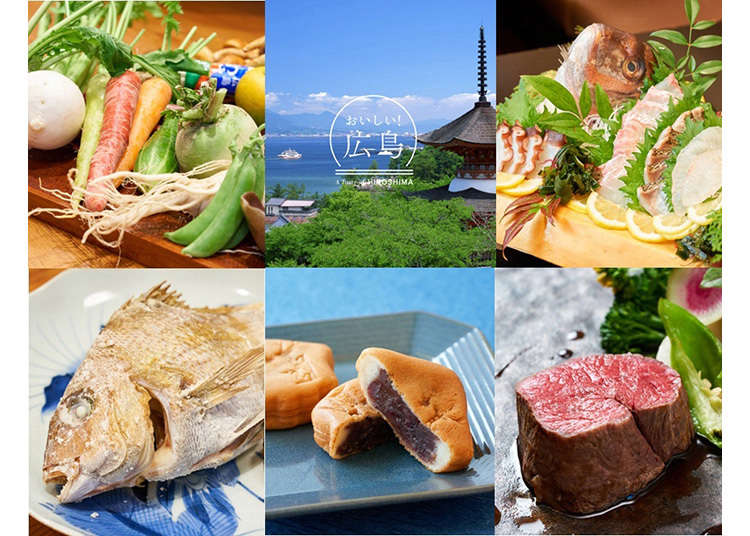
Hiroshima Prefecture, beautifully situated along the Seto Inland Sea, boasts two World Heritage Sites, highlighting its significant role in global culture. While these heritage sites alone make Hiroshima a must-visit destination, the region offers much more.
Thanks to its proximity to the sea and rich agricultural land, Hiroshima has a thriving culinary scene—and ‘A Taste of HIROSHIMA’ is your helpful guide to exploring it. This essential website features the finest eateries and food shops in Hiroshima.
We will guide you on how to effectively use this site and showcase some of the top-quality restaurants and shops that you can discover with a simple search.
*This article includes advertising content.
One of Japan's most famous destinations – Hiroshima
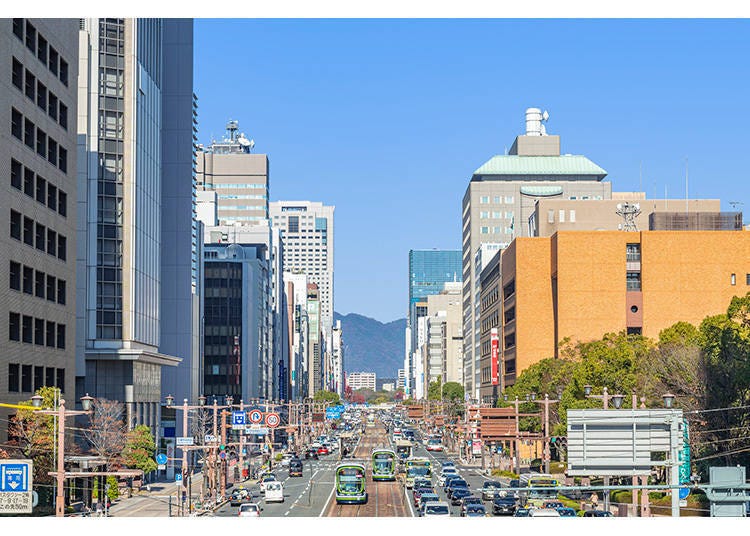
Hiroshima Prefecture, situated at the heart of Japan's Chugoku region, lies at the western end of Honshu, Japan's main island. The north of the prefecture is dominated by the majestic Chugoku Mountains, reaching heights of 1,000 meters and offering breathtaking natural vistas that shift with each season. In the south, the prefecture extends to the scenic Seto Inland Sea, dotted with around 140 islands of varying sizes.
As the capital of the prefecture, Hiroshima City is the largest urban center in both the Chugoku and Shikoku regions. This city is not only rich in natural beauty but also a hub for industry and commerce. Additionally, Hiroshima Prefecture is renowned for housing two World Heritage Sites: the Itsukushima Shrine and the Atomic Bomb Dome.
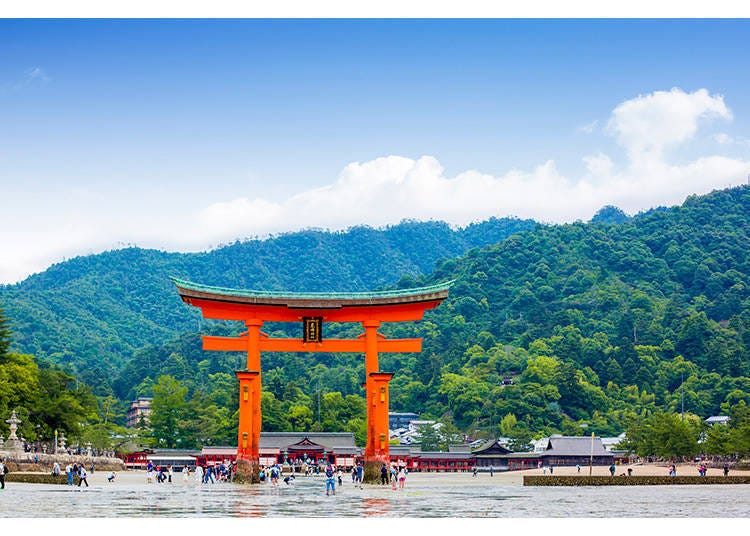
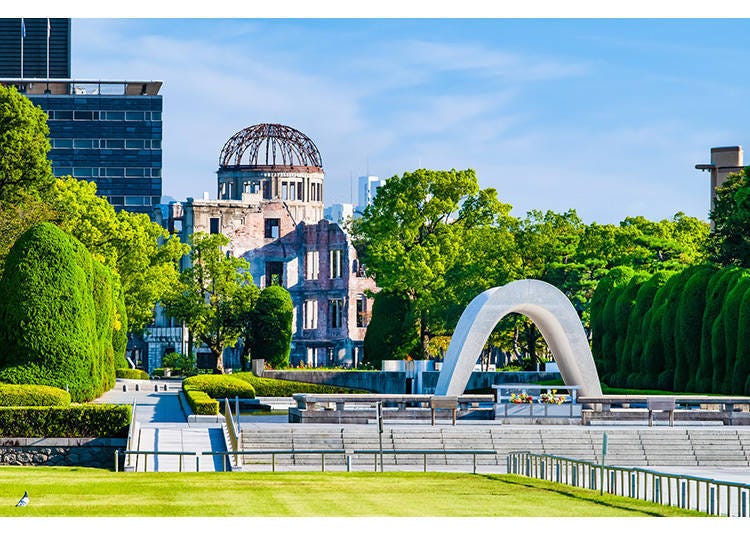
Travel to Hiroshima Prefecture is convenient, with flights from Narita or Haneda Airport taking around 1 hour and 30-45 minutes. Alternatively, the bullet train journey is less than 4 hours from Tokyo Station and around 1 hour and 30 minutes from Kyoto Station.
Spicing up Hiroshima's food scene with A Taste of HIROSHIMA
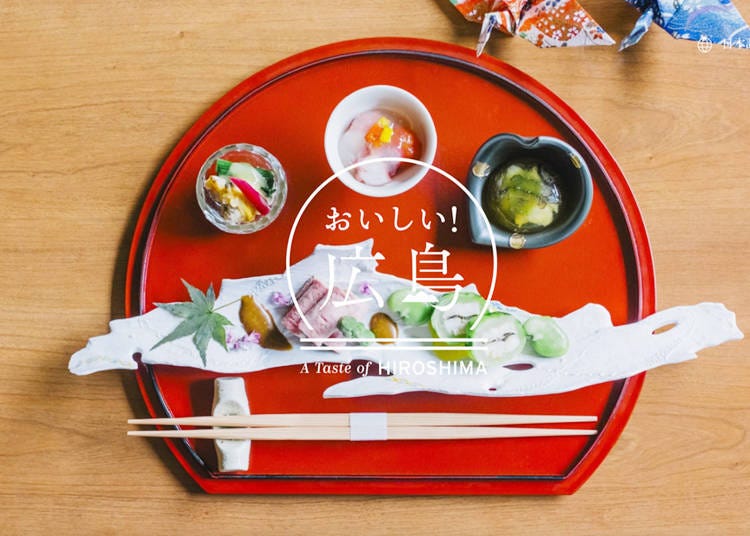
Though Hiroshima Prefecture is full of cultural and historical landmarks, they aren't the only thing that’s special about the area. Hiroshima also boasts a rich, diverse food culture unlike anything in the world. From seafood plucked straight from the Seto Inland Sea, to beef and pork brands bolstered by centuries of tradition, to a wide variety of fresh vegetables and citrus fruits, Hiroshima is a trove of edible treasures.
A Taste of HIROSHIMA was developed to spread the word about Hiroshima's diverse range of delicacies both in and outside of Japan, and to spark new energy in this one-of-a-kind food culture. Hiroshima's most influential organizations, companies, and restaurants have worked together with food producers to arrange spectacular dishes that showcase Hiroshima's unique flavors.
Try the best of Hiroshima cuisine at "Tabensai Shops"
One of the highlights of the A Taste of HIROSHIMA project is the Tabensai Shops, a list of stores serving cuisine emblematic of Hiroshima. The word "tabensai" means "try a bite" in Hiroshima's dialect. As the name suggests, the list is full of restaurants and shops serving must-try foods that give tourists an authentic taste of Hiroshima.
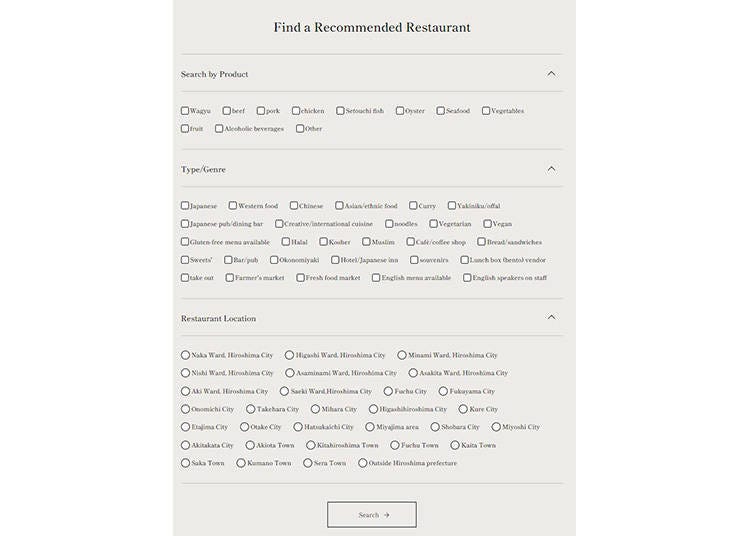
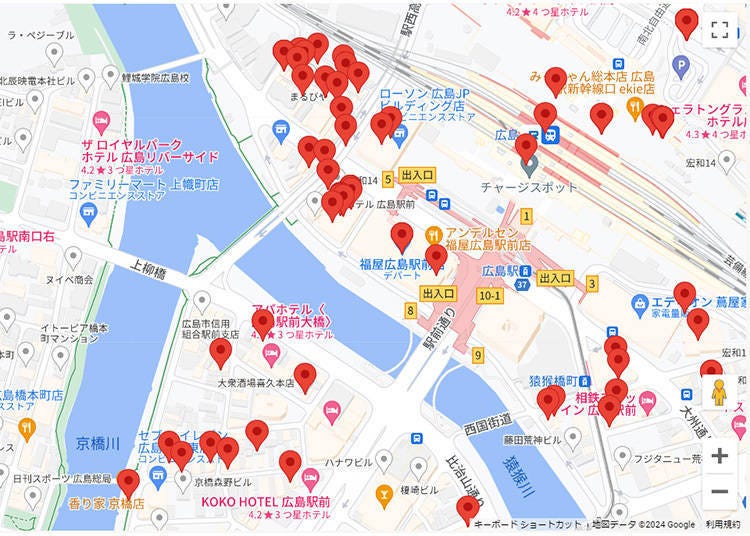
With a selection of over 1,000 Tabensai Shops, deciding where to dine might seem overwhelming. But fret not! The user-friendly search system makes it easy to narrow down results to match your needs, with categories like area, restaurant type, cuisine, what Hiroshima products they stock, and more. A Google Maps link is provided for each business and you can even search for spots near your current location, making it convenient to find the perfect dining experience.
Find the perfect bites from over 1,000 recommended spots!
Next, we'll introduce some gems found by searching keywords on the A Taste of HIROSHIMA website. Each establishment stands out with its own distinct character and dedication to quality.
Search using: Miyajima area, souvenirs, fruit
Nishikido Miyajima Store
Momiji manju is a delightful confection that has become emblematic of Hiroshima. Named after the Japanese word for maple leaf, "momiji", these petite buns are traditionally crafted from buckwheat or rice flour and typically filled with a sweet red bean paste. Believed to have originated in Miyajima, home to the World Heritage-listed Itsukushima Shrine, momiji manju holds a special place in Japanese culinary culture. One of the leading manufacturers of momiji manju in Hiroshima Prefecture is Nishikido, which has a location right next to the Miyajima Island ferry terminal.
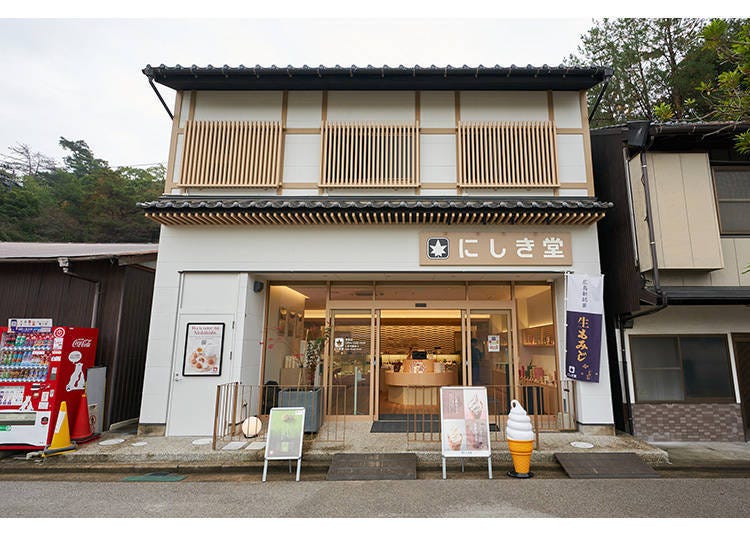

Since its establishment in 1951, Nishikido has been crafting sweets with love. Their most famous confection is momiji manju, which they have been making for 70 years. Initially, they only made one type; castella sponge cake dough filled with sweet red bean paste. Now they sell more than 20 kinds of momiji manju using a variety of types of dough, including seasonal exclusives.

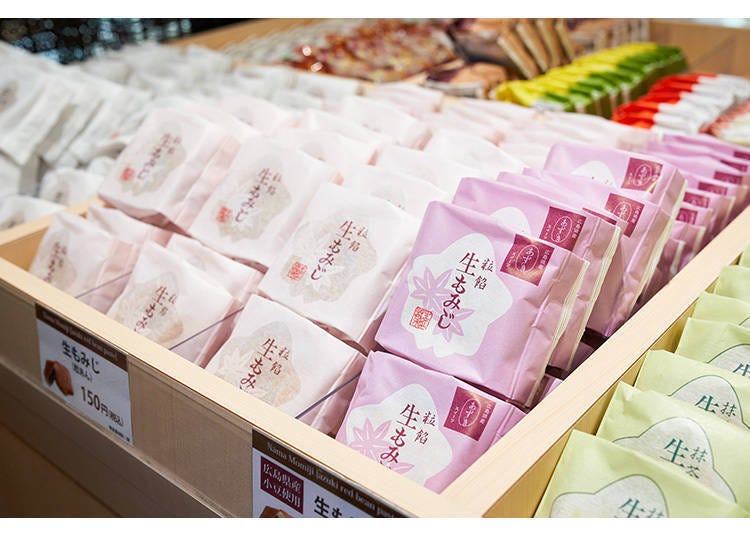
Among these variations, one has become even more popular than the standard momiji manju. The beloved Nama Momiji (150 yen per piece) is made with dough using rice flour from Hiroshima Prefecture, which gives it an unforgettable moist, chewy texture. Fillings include chunky or smooth red bean paste, green tea filling, and more, including a special smooth red bean paste made with beans grown in Hiroshima.
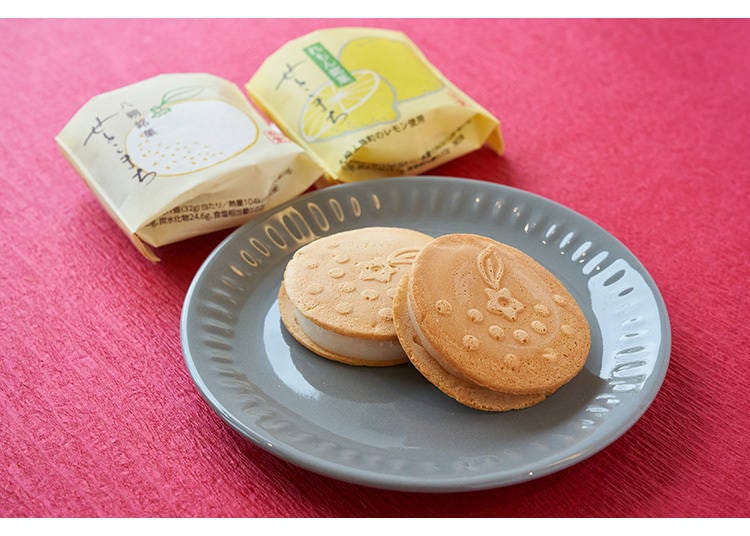
Get a mouthful of the Seto Inland Sea's famous citrus with Seto komachi (140 yen per piece). A thin rice cake, called "gyuhi," is filled with tart citrus jam made from lemons grown in Osaki Kamishima and massive hassaku oranges from Innoshima. This cake is then sandwiched between two soft rice crackers to complete this refreshing treat.
-
Nishikido Miyajima Storeにしき堂 宮島店
- Address 1165-2 Miyajima-cho, Hatsukaichi City, Hiroshima Prefecture 739-0588
- Phone Number 0829-30-6777
Hours: Open daily 10 AM to 6 PM
Search using: Naka Ward Hiroshima City, Western cuisine , Wagyu, Vegetables, Alcoholic beverages
L'UNIVERS
Run by Hiroshima-born chef Ryo Imai, who honed his skills at a Michelin-starred restaurant in the Nice region of France, the exclusive L'UNIVERS restaurant only accepts two reservations per day. Chef Imai adores using local ingredients and sharing their charm with guests through his omakase (chef's choice) course meal full of vegetables and fresh fish sourced from the prefecture.
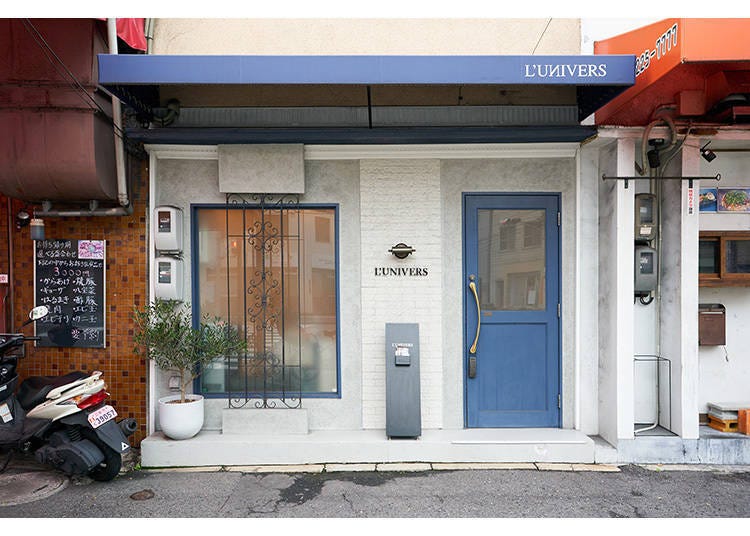

"The best thing about ingredients from Hiroshima Prefecture is the incredible people behind them," Chef Imai says. He actively sources many of his ingredients directly from the producers themselves. Establishing personal connections with them fuels his passion, he explains, as he strives to honor their hard work in his cuisine. Many ingredients come from farms Imai has collaborated with since the restaurant's inception, such as vegetables from the Hanaafu Organic Farm in Higashihiroshima City and herbs from the Takagake Farm in Mihara City.
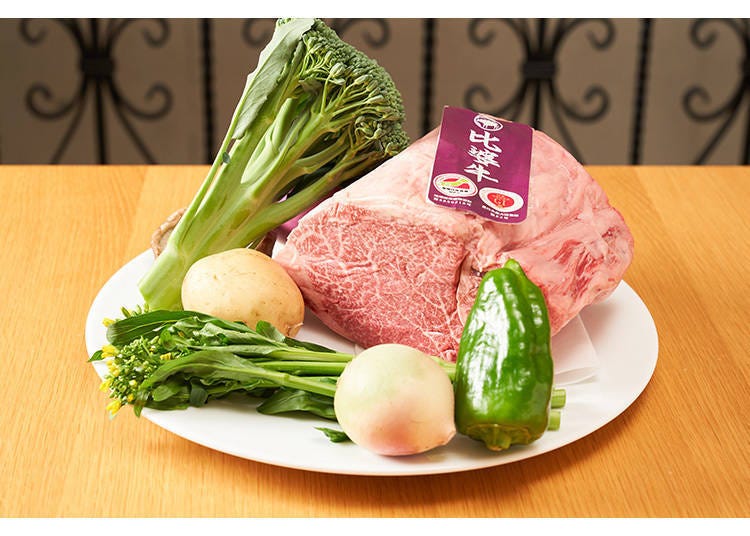
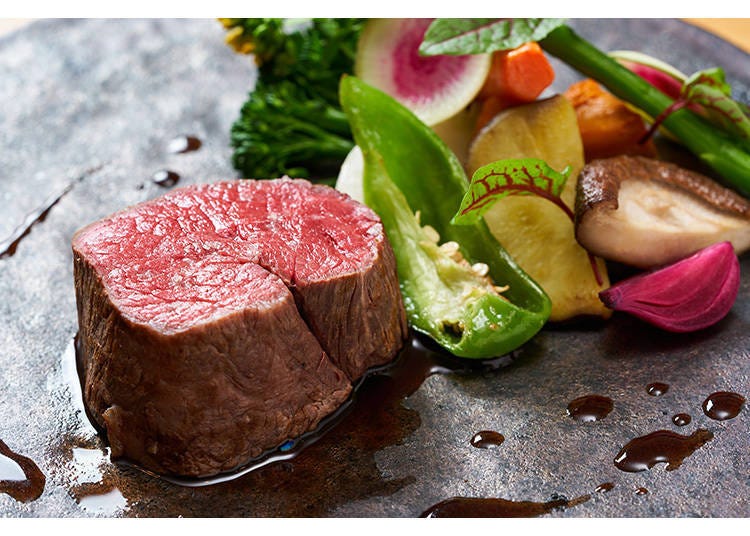
The lineage of Hiba beef stretches back over a millennium. Raised in Shobara City in Hiroshima Prefecture, this distinguished pedigree beef gained international recognition when it was served at the G7 summit in 2023. Chef Imai has developed a special cooking method especially for it, in which the beef is cooked in a frying pan before being taken in and out of an oven several times. The result is melt-in-your-mouth tenderness that delivers the full succulence of the red meat in every bite.

According to Chef Imai, Nice and Hiroshima share a similarity in their proximity to the sea and access to delicious fish. Six of the ten courses served in the omakase course include fish, giving guests a comprehensive experience of Hiroshima's delicious seafood. The restaurant's specialty is consommé royale, a French soup with chunks of steamed egg custard. Chef Imai adds his own twist by incorporating seasonal seafood, such as oysters, flatfish, or blue crab.
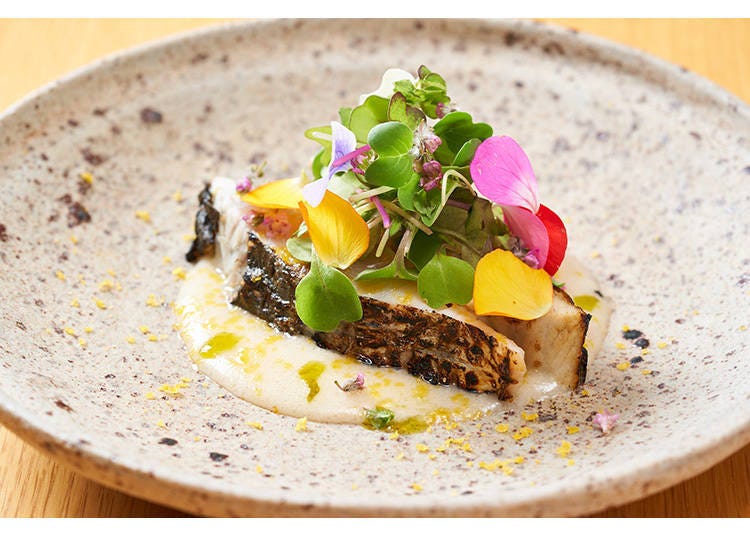
-
L'UNIVERSリュニベル
- Address 7-3 Higashi-Hakushima-cho, Naka Ward, Hiroshima City, Hiroshima Prefecture 730-0004, Japan
- Phone Number 082-576-7239
Hours: Limited to two groups per day. Courses begin at noon and from 6 PM to 8 PM (closed on Mondays and Tuesdays).
Search using: Naka Ward Hiroshima City, Japanese cuisine , Japanese pub/dining bar, Setouchi fish, Alcoholic beverages
Banya Shippomaru Hatchobori
South of Hiroshima Castle, the Hatchobori area in the heart of Hiroshima City has a storied history as a castle town and is one of the city's most vibrant places. Tucked in the corner of the lively area is Banya Shippomaru, where you can savor the bounty of the Seto Inland Sea paired with locally brewed sake. Though popular with tourists eager for a taste of Hiroshima, this spot also has a loyal following of city residents.

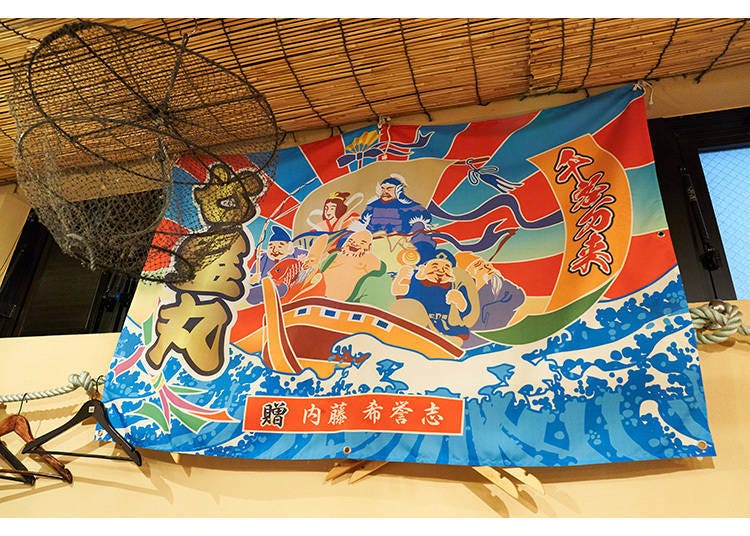
"Freshness is key to good fish." That's Banya Shippomaru's motto, and honoring that sentiment, every day they purchase fresh fish and shellfish caught that morning on Etajima Island in the Seto Inland Sea and keep them alive and swimming in a tank in the restaurant.
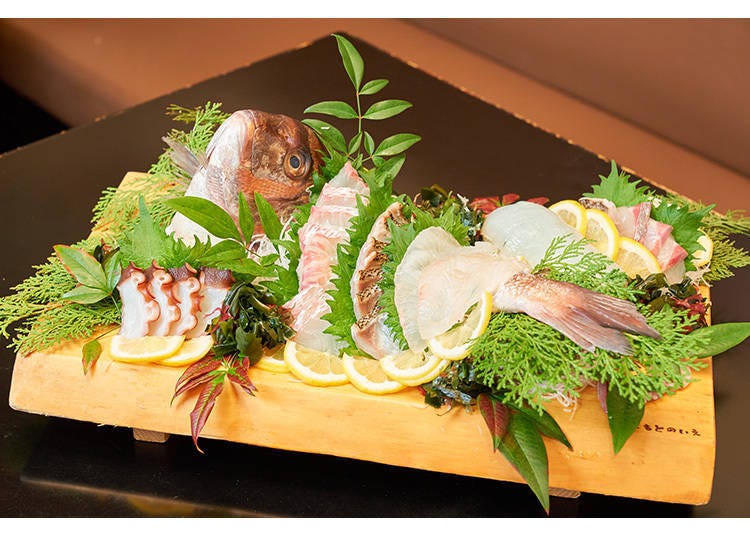
The restaurant even has its own fishing boat, which the owner sometimes uses to bring in catches of his own. Fish this fresh is best savored raw and the omakase (chef's choice) sashimi raw fish platter (four kinds of fish, 1,630 per person) lets you sample a variety of seasonal fish.
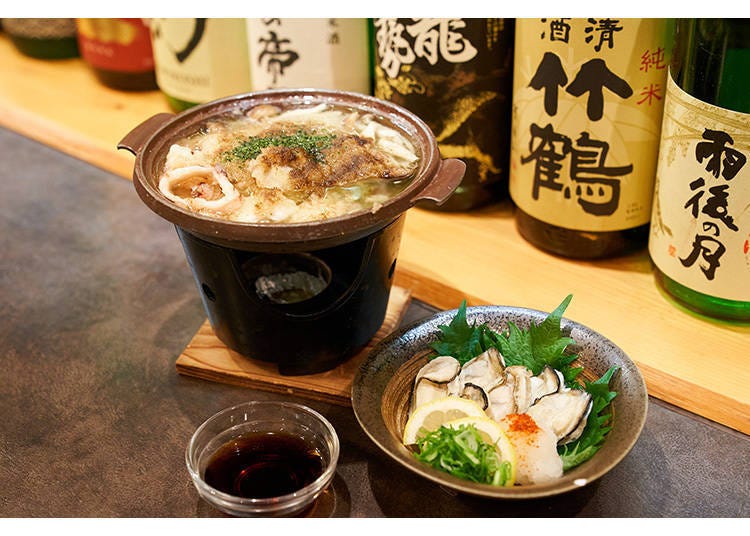
They're proud of more than just their sashimi. The irresistible ajillo, a dish filled with seasonal fish fillets and scallops, has a robust garlic flavor. From November to May, Etajima's famous oysters are in season, meaning heavenly oyster dishes will be on offer, served boiled, grilled, fried as tempura, and any other way you can imagine. Locally brewed sake is the perfect accompaniment with seafood and you can select from a wide range of unique varieties.

In Japanese culture, a night of drinking and eating is often capped with a rice-based dish like rice balls. At Banya Shippomaru, their spin on this tradition includes seafood, of course. The sea bream rice pot (1,100 yen), the restaurant's signature dish since opening, is rice soaking in broth cooked in a small pot right on your table. The broth, made from slowly simmered Etajima sea bream, permeates every grain of rice, creating a rich flavor.
-
Banya Shippomaru Hatchobori海鮮酒場 番屋七宝丸 八丁堀店
- Address 7-13 Teppo-cho, Naka Ward, Hiroshima City, Hiroshima Prefecture 730-0017
- Phone Number 082-225-7676
Hours: Open 6 PM to midnight (Closed on Sundays)
Search using: Onomichi City, Japanese cuisine, Setouchi fish, Vegetables, Fruit, Alcoholic beverages
Bingosaryo
Onomichi City, often referred to as "the city of hills," is charmingly situated amidst mountains near the sea in the eastern part of Hiroshima Prefecture, known as the "Bingo Region." Bingosaryo, established in 2013, derives its name from this region and specializes in dishes made with locally-sourced ingredients. This restaurant hosts only one group per day, strictly by reservation, allowing owner Masanori Takada and his family to provide exceptionally warm, personalized service to each and every guest.

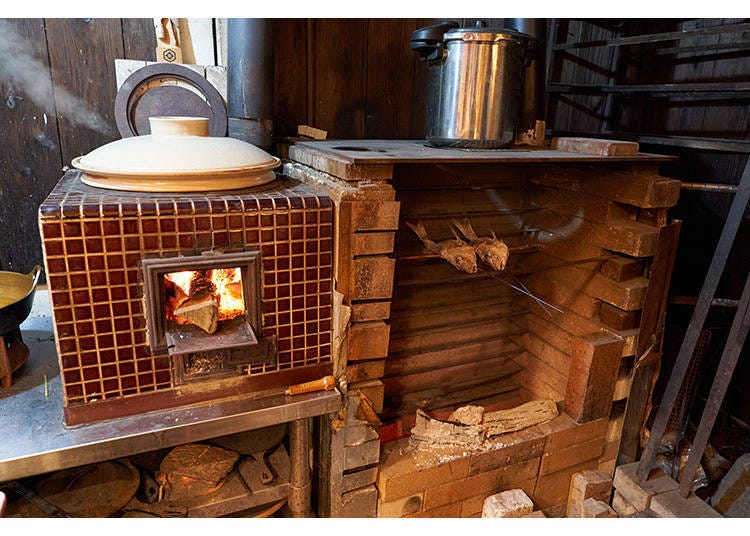
Explore a wide variety of regional fish and vegetables with Bingosaryo's exquisite course meal.

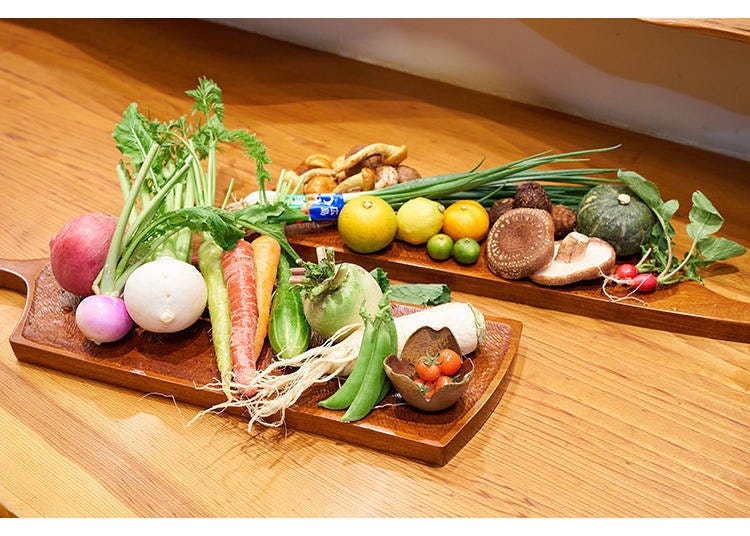
All of their fish comes directly from local fishermen in Onomichi City, and is served at the peak of its deliciousness. Because the Bingo region is near the ocean, they can serve small fish raw, a feat usually impossible due to how quickly small fish spoil. Fruits and vegetables come from a nearby farmer's market, where freshly picked produce is sold every morning.
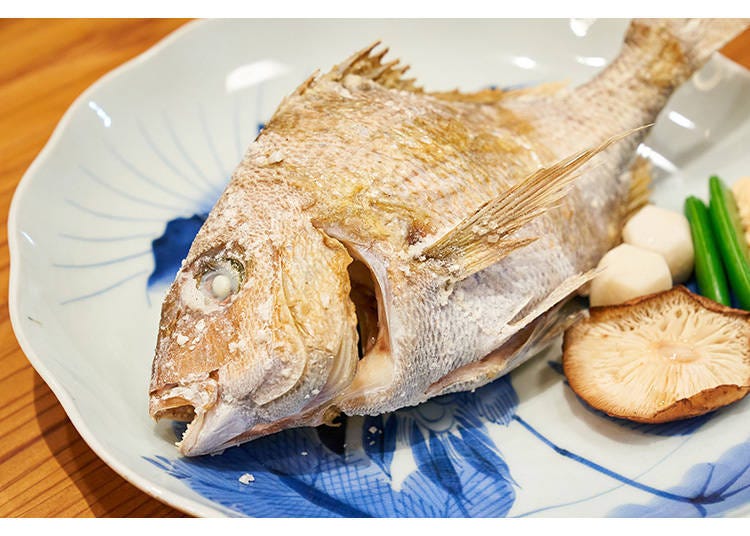
Bingosaryo is famous for their sea bream hamayaki, a local dish originating from Onomichi that has a history of about 300 years, though it fell out of popularity for a time. Takada brought new life to this traditional dish, which he feels has a festive allure. Not only does he use fresh sea bream caught in the sea of Onomichi, but he even produces the dish's only seasoning, salt, using the salt refinery he keeps on the roof. By painstakingly following each tradition to the letter, he recreates this ancient dish just as it existed centuries ago.
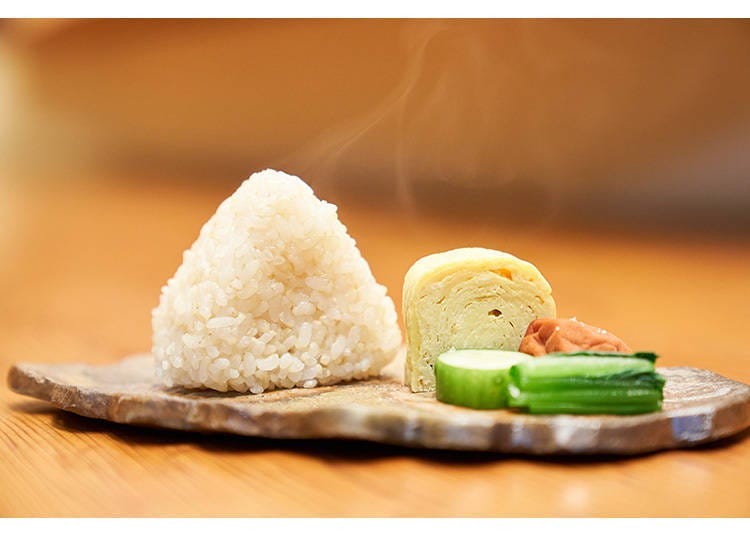
"All of the ingredients I use are delicious already, so I don't need to do much to them," Takada says. True to his word, the final course he serves is a simple salted rice ball. The rice is cooked in a clay pot in a wood-fire oven, and the sweetness of the rice is brought out by the saltiness of his homemade natural salt. The rice is served with his special "second-generation" tamagoyaki egg omelet. The dish gets its name from the eggs used, as they come from the heirloom chickens belonging to Takada's son.
-
Bingosaryo備後茶量
- Address 2-20-2 Kubo, Onomichi City, Hiroshima Prefecture 722-0045
- Phone Number 0120-966-324
Hours: Open daily 10 AM to midnight
A Taste of HIROSHIMA mini banner
The A Taste of HIROSHIMA project is currently in full swing to promote Hiroshima cuisine throughout Japan and the world! There are plans to add even more Tabensai Shops to the list, so keep checking back. Find the perfect places to enjoy an authentic taste of Hiroshima yourself!
- Area
- Category
-
Sponsor Content Must-See
*Prices and options mentioned are subject to change.
*Unless stated otherwise, all prices include tax.
Limited time offer: 10% discount coupons available now!
-

Best Things to Do in Tokyo in April 2024: Events, Festivals & More
-

Opened in Spring 2024! What to do at Tokyu Plaza Harajuku Harakado
-

The Complete Guide to the Kintetsu Rail Pass
-

Everything You Need To Know About the Kyoto-Osaka Sightseeing Pass
-

12 Unique & Fun Tokyo Food Tours to Enjoy in 2024
-

15 Must-Try Restaurants in Ikebukuro: From Aged Yakiniku to All-You-Can-Eat Sushi, Plus Adorable Animal Cafés
-
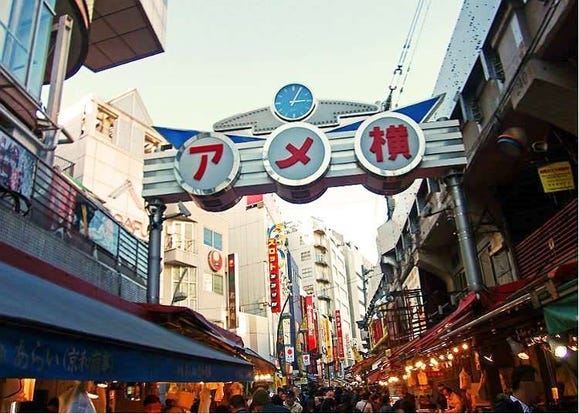
Ueno Station Area Guide: Fun Ways to Explore Tokyo's Popular Destination (Area Map & Sightseeing Tips)
-

What Are the Top 3 Must-Eat Foods in Japan? We Asked 50 Tourists for Their Recommendations
-

Japanese Supermarket Run: Top 9 Amazing Japanese Snacks and Instant Noodles!
-
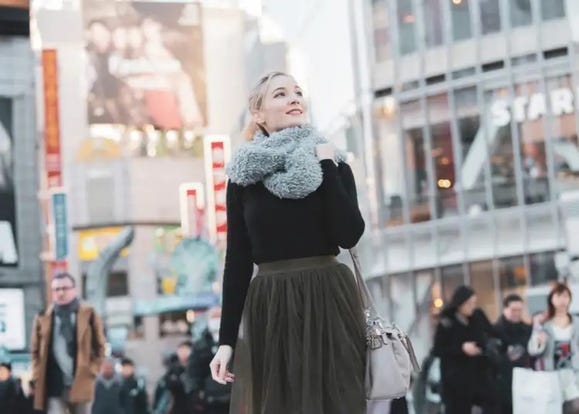
Secrets to Shopping in Japan: Guide to Annual Sales in Japan & Where to Shop
-
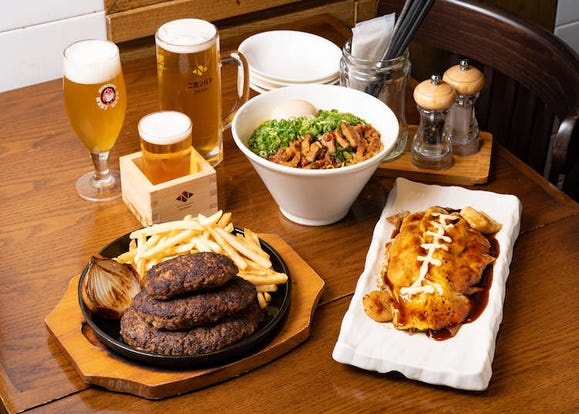
Countdown to the Rugby Kick-off with Beer and Themed Food Fairs at Tokyo Station!
-
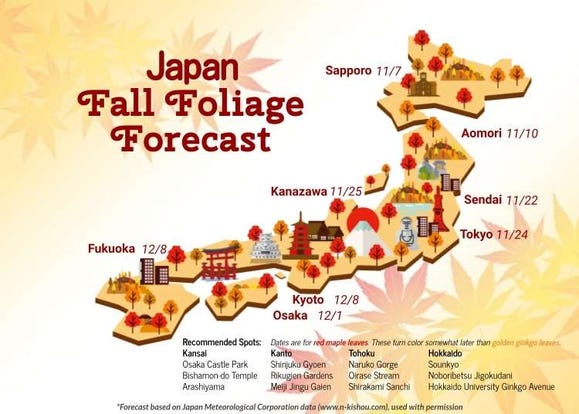
Autumn in Japan 2024: Fall Foliage Forecast & Where to Enjoy the Colorful Leaves (+Tour Info)
- #best ramen tokyo
- #what to buy in ameyoko
- #what to bring to japan
- #new years in tokyo
- #best izakaya shinjuku
- #things to do tokyo
- #japanese nail trends
- #what to do in odaiba
- #onsen tattoo friendly tokyo
- #daiso
- #best sushi ginza
- #japanese convenience store snacks
- #best yakiniku shibuya
- #japanese fashion culture
- #best japanese soft drinks












